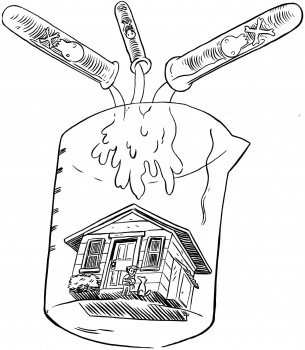by Pauline M. Alvar
 No one has treated as many patients exposed to the oil products in the wake of the BP spill as Dr. Michael Robichaux. Among his successes, Dr. Mike (as his patients affectionately call him) has helped some of those suffering health problems caused by the chemicals in oil and dispersants by using a detox program originally devised to treat a group with similar symptoms: veterans returning from the first Gulf War.
No one has treated as many patients exposed to the oil products in the wake of the BP spill as Dr. Michael Robichaux. Among his successes, Dr. Mike (as his patients affectionately call him) has helped some of those suffering health problems caused by the chemicals in oil and dispersants by using a detox program originally devised to treat a group with similar symptoms: veterans returning from the first Gulf War.
It took 15 years for the US Government to acknowledge that the multi-system health issues of thousands of soldier were not imaginary; this acknowledgement does not mean they’ve received the care they need. “Gulf War Syndrome” is the shorthand name for a pattern of acute and chronic symptoms including memory loss, gastrointestinal and respiratory issues, as well as fatigue, pain, and an overall increased sensitivity to exposure to chemicals. While it has been studied and treated (with some success), it has not been acknowledged within a larger context. Gulf War Syndrome is actually a syndrome of petrochemical exposure, leading to a disease process still not fully understood by the medical community: Toxic-Induced Loss of Tolerance, or TILT.
Although large scale processing of petroleum began in the late 1800s, petrochemical production really took off just after World War II. Our understanding of how these chemicals impact human health is limited because humans have only received this kind of high or ongoing exposure in recent decades. There is no test to diagnose TILT; this may be because the symptoms are so varying and multi-system, or, perhaps more importantly, because there is such a massive disincentive for us to fully understand this disease process: it is caused by the most economically powerful industry in the history of the world.
TILT is not limited to those impacted by the Gulf Coast BP Oil Spill or Gulf War Vets. The nationwide spread of hydraulic fracturing for oil and gas production (note that the chemicals used for fracturing are similar to petroleum-based dispersants like Corexit) has moved this level of chemical exposure to nearly every state in the union. The must-see film “Gasland” shows rural folk suffering symptoms remarkably similar to those experienced by Gulf Coast residents exposed to crude and dispersants. Livestock may be our canary in the coal mine in fracking exposure: in 2009, in Caddo Parish, Louisiana, 19 cows died after a mere hour’s exposure to hydrofracking chemicals. Necropsy showed respiratory failure as the cause of death.
Perhaps it will be argued those cows had some pre-existing condition– that they were exposed to cigarette smoke or that some of them had asthma, or bronchitis as calves. Perhaps it’s only a coincidence that they dropped dead after sixty minutes of exposure to fracking chemicals.
More and more of us will see and experience the effects, fatal and otherwise, of exposure to petrochemicals. We will see it due to industrial “accidents” like the Exxon Valdez and BP spills, business-as-usual hydrofracking, and the corporate-directed U.S. war machine which treats our troops as expendable livestock. We must begin connecting these medical dots between what the oil and gas industry wants us to believe are isolated incidents or illnesses unrelated to chemical exposure.
Corporate influence reaches deep, even into the supposedly objective worlds of science and medicine. Does their money talk loud enough to drown out our suffering?
Share